How to make hummingbird food with just two ingredients, and give these beautiful birds a nutritious feast
Easy hummingbird food they'll love

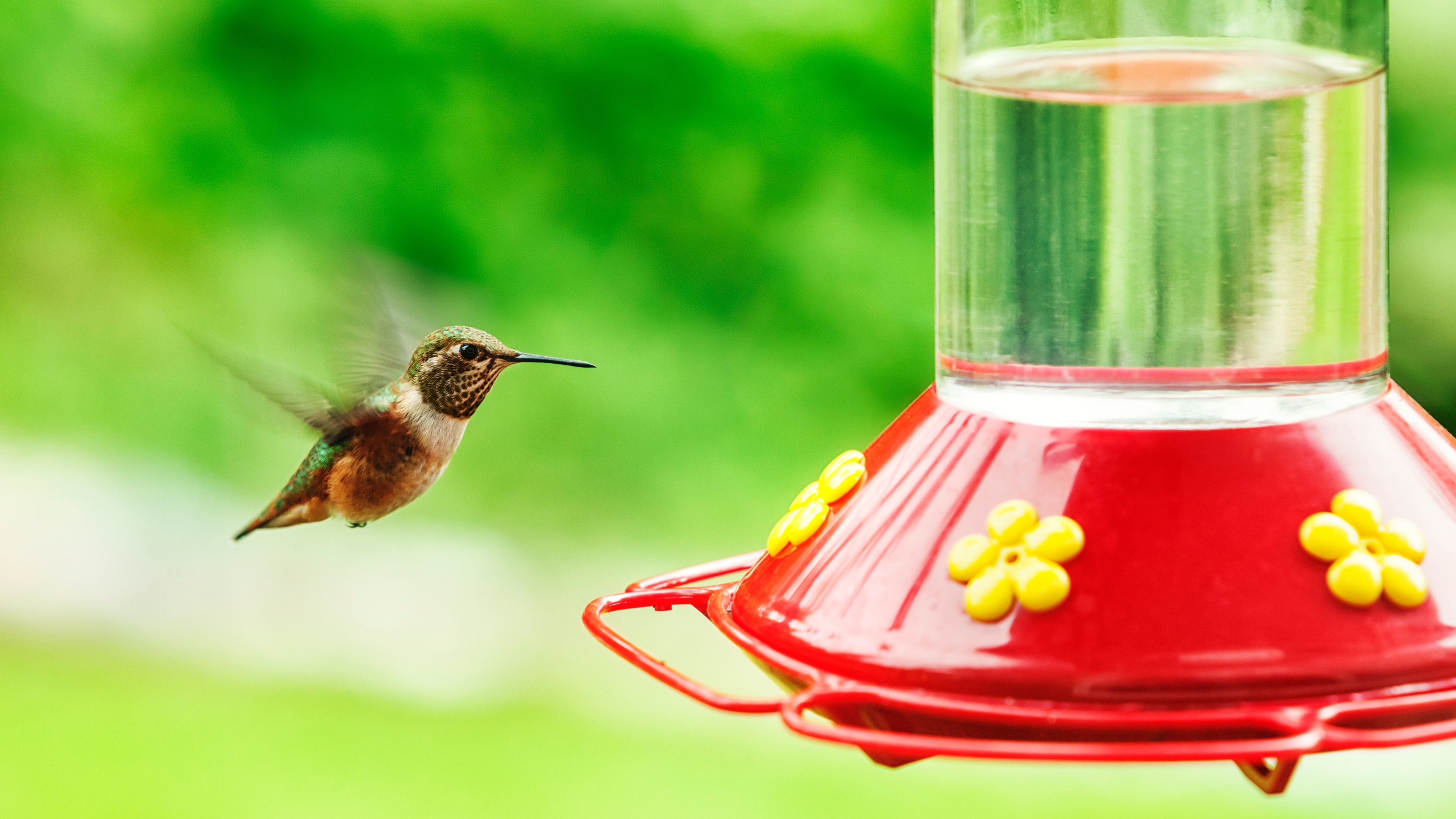
- 1. Gather ingredients
- 2: Measure and mix
- 3. Boil the mix
- 4. Cool and store
- 5. Fill your feeder
- Meet our expert
- FAQs
- Can I add honey?
- Should I use red dye?
- How long does homemade hummingbird food keep?
- Can I put my hummingbird feeder near a regular bird feeder?
- What should I do if ants find my feeder?
Knowing how to make hummingbird food is key if you want to welcome these wonderful creatures to your home and give them exactly the nutrition they need.
Our expert guide reveals the five simple steps to creating your own hummingbird food. With a wing speed of up to 70 beats per second — faster than any other bird — they're sure to be hungry when they drop by.
Like most happy dinner guests, when it comes to attracting hummingbirds to your backyard, it begins with serving up the right food. With just a few ingredients and steps, you can provide a safe food source for your flighty feathered visitors.
Five steps to making perfect hummingbird food
Whether you're looking to welcome hummingbirds to your balcony or backyard, our expert guide to making homemade hummingbird food will work nicely in each. Just make sure you avoid hummingbird feeder mistakes whilst you're at it!
As well as walking you through the simple steps, our expert guide includes top tips, what to avoid and a detailed Q&A section to cover all your queries.
Where products have been recommended, we've sourced high-quality items from reliable retailers — so you can be sure you're getting bang for your buck.
Prices correct at time of publication.
Get small space home decor ideas, celeb inspiration, DIY tips and more, straight to your inbox!
Step 1: Gather your ingredients
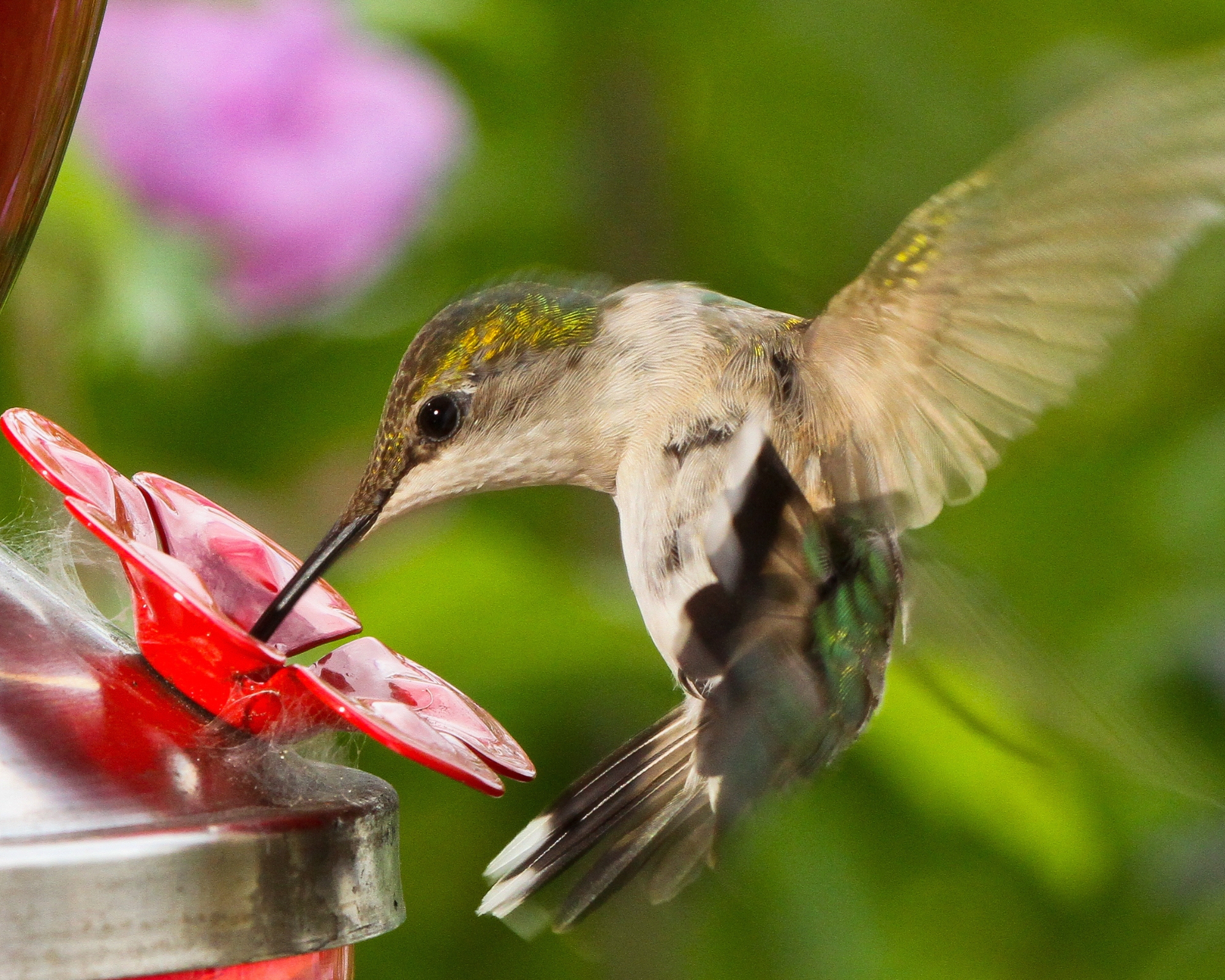
To make hummingbird food, you'll need two simple ingredients only — granulated white sugar and water.
Cyrille Adjalala, founder of Bird Watchers Hub, says, "Sometimes people assume it can't be that simple, but it really is. But don't use honey, artificial sweeteners, or food coloring — these can actually harm hummingbirds."
It’s important to use only granulated white sugar because it closely mimics the natural sucrose found in flower nectar. Other types of sugar or sweeteners can introduce harmful substances to the birds, causing health issues or even death.
This Great Value Pure Granulated White Sugar from Walmart is gluten-free, kosher and well-reviewed.
Step 2: Measure
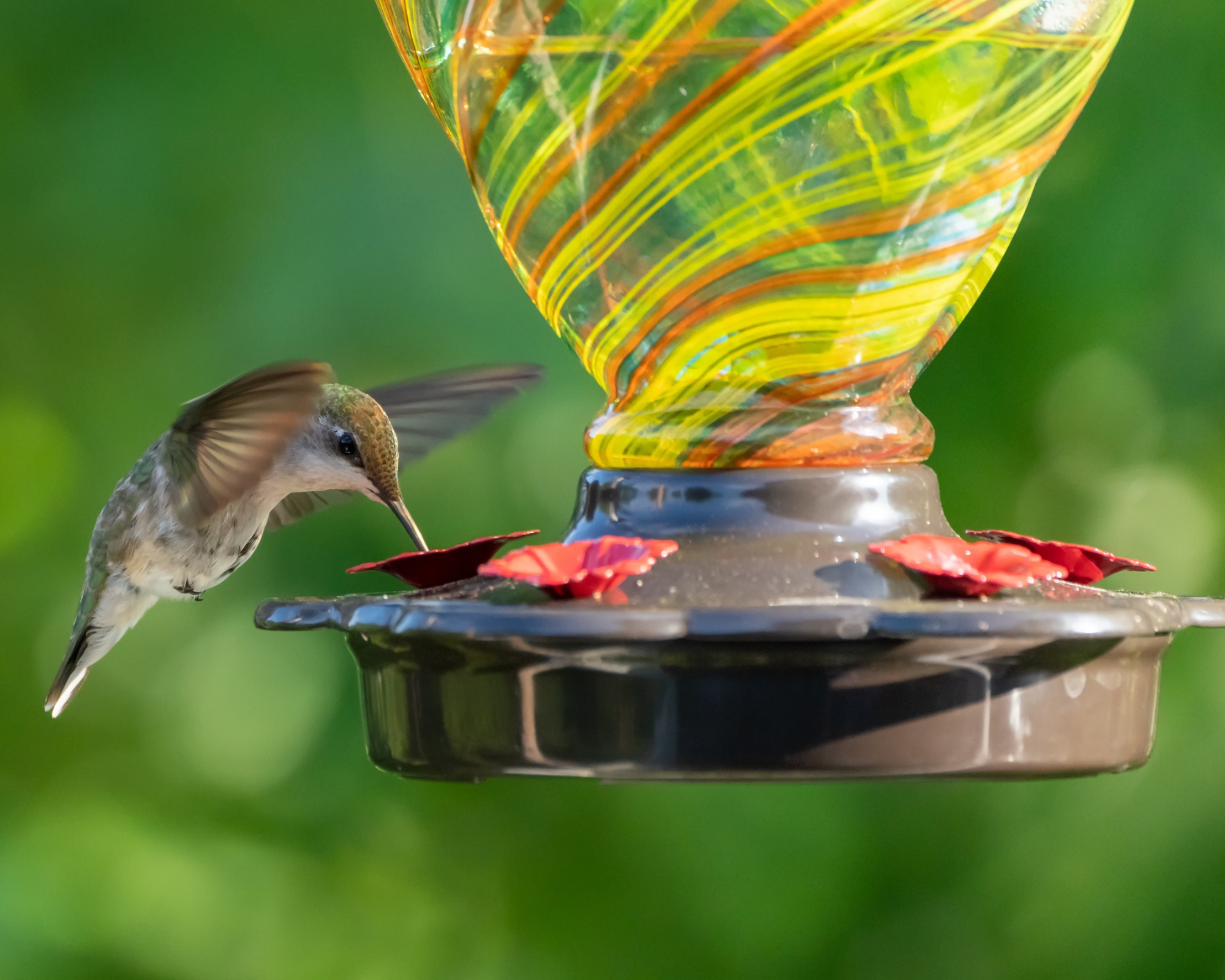
The ideal ratio for hummingbird food is one part sugar to four parts water. This ratio closely resembles the natural sugar concentration found in the nectar of flowers that hummingbirds feed on.
To prepare, simply measure out one cup of granulated white sugar, then four cups of water. Using precise measurements ensures that the mixture is neither too strong nor too weak, providing the perfect energy boost for hummingbirds.
Too much sugar can be harmful, while too little won’t provide adequate nutrition. Don't mix them yet.
Step 3: Boil the mixture
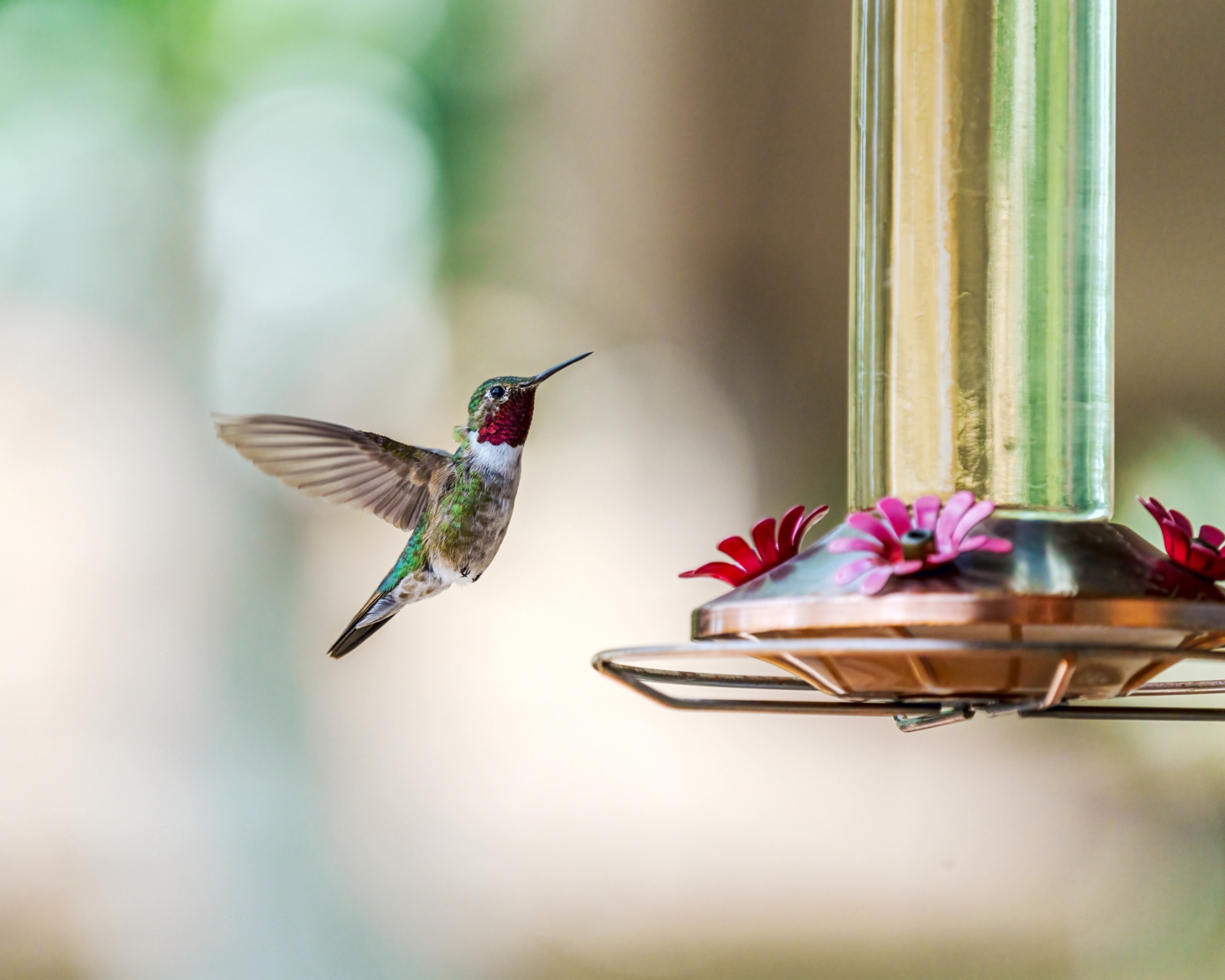
Boiling the water and sugar mixture helps to dissolve the sugar and kills any potential bacteria or mold spores.
Begin by pouring the four cups of water into a pot and bring it to a boil. Next, add the one cup of sugar to the boiling water. Finally, stir until the sugar is completely dissolved.
Cyrille says, "Boiling the mixture is a crucial step because it ensures that the solution is safe for the hummingbirds. Even if the water supply is clean, boiling eliminates any possible contaminants, providing a healthier option for the birds."
This Faberware Reliance Non-Stick Saucepan from Target is small, light, non-stick and ideal for boiling hummingbird food mixture. If you're in a rush or looking to pre-boil your water, this Peach Street Store Speed-Boil Kettle from Amazon boasts a 3-minute boil time and has a cool-touch handle.
Step 4: Cool and store
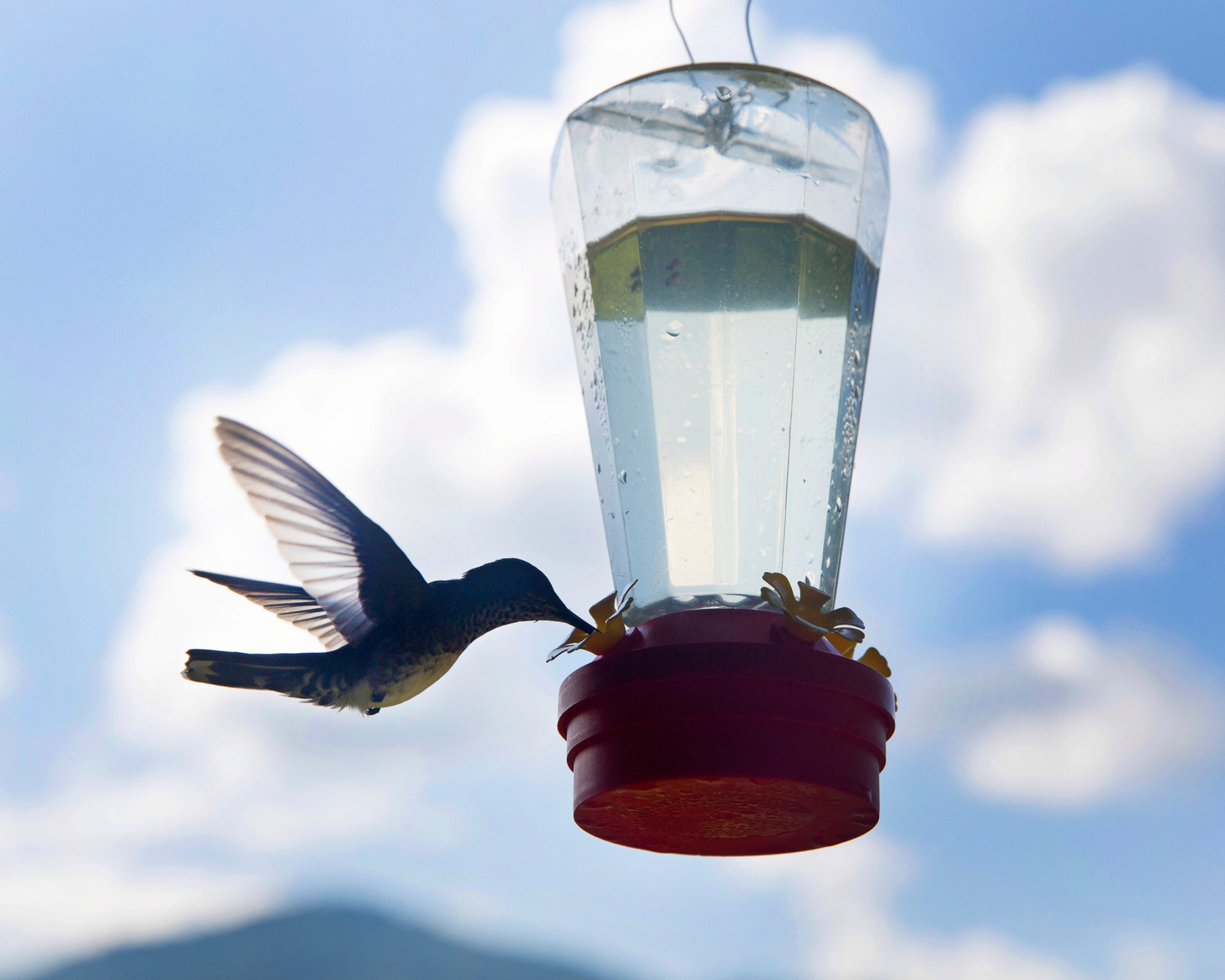
After the sugar has completely dissolved, remove the pot from the heat and let the mixture cool to room temperature. Once cooled, pour the mixture into a clean container and store it in the refrigerator if not using immediately.
Cooling the mixture properly before storing it prevents the growth of bacteria and mold. Storing the sugar water in the refrigerator helps maintain its freshness and prolongs its usability.
5. Fill your feeder
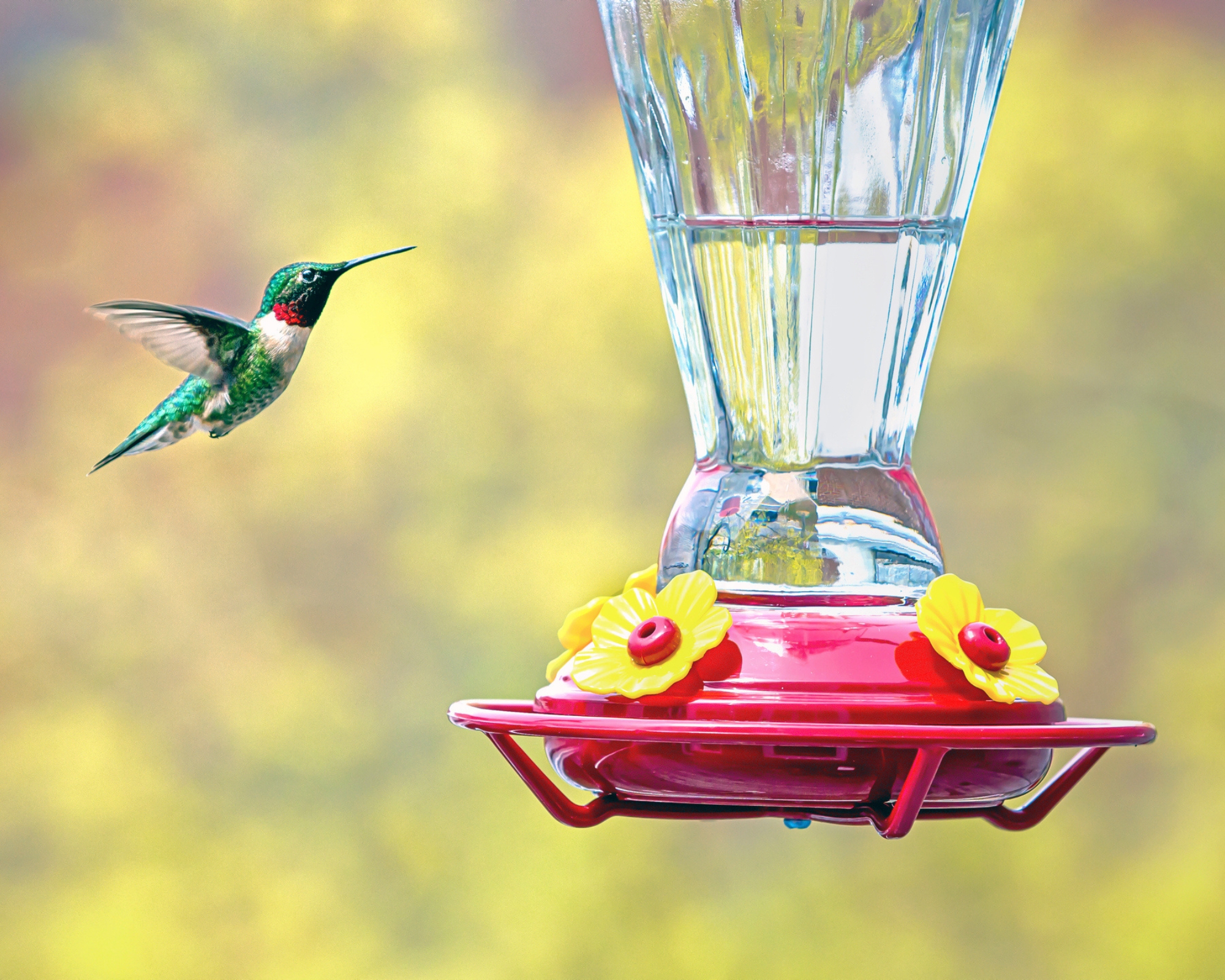
Before filling your feeder with your hummingbird nectar recipe, make sure it's clean.
Cyrille says. "When you’re ready to use the hummingbird food, always make sure the feeder is clean to prevent contamination from previous batches. Old or dirty feeders can harbor bacteria and mold, which can be harmful to hummingbirds.
"Clean your feeder regularly with hot water and vinegar (avoid soap). I recommend doing this at least twice a week to prevent mold and bacterial growth."
You can check out our guide to the best bird feeders, or see our suggested products below. Cyrille recommends this Perky-Pet Store Hummingbird Feeder from Amazon. He says, "This feeder is easy to clean, has multiple feeding ports, and includes a built-in ant moat to keep pests away."
With your clean feeder at the ready, it's finally time to fill it with the sugar water mixture, place it outside and wait for your fluttering friends to arrive.
Cyrille adds, "Look for a shady spot as this prevents — or at least slows down — fermentation, ensuring the hummingbirds get fresh, nutritious food."
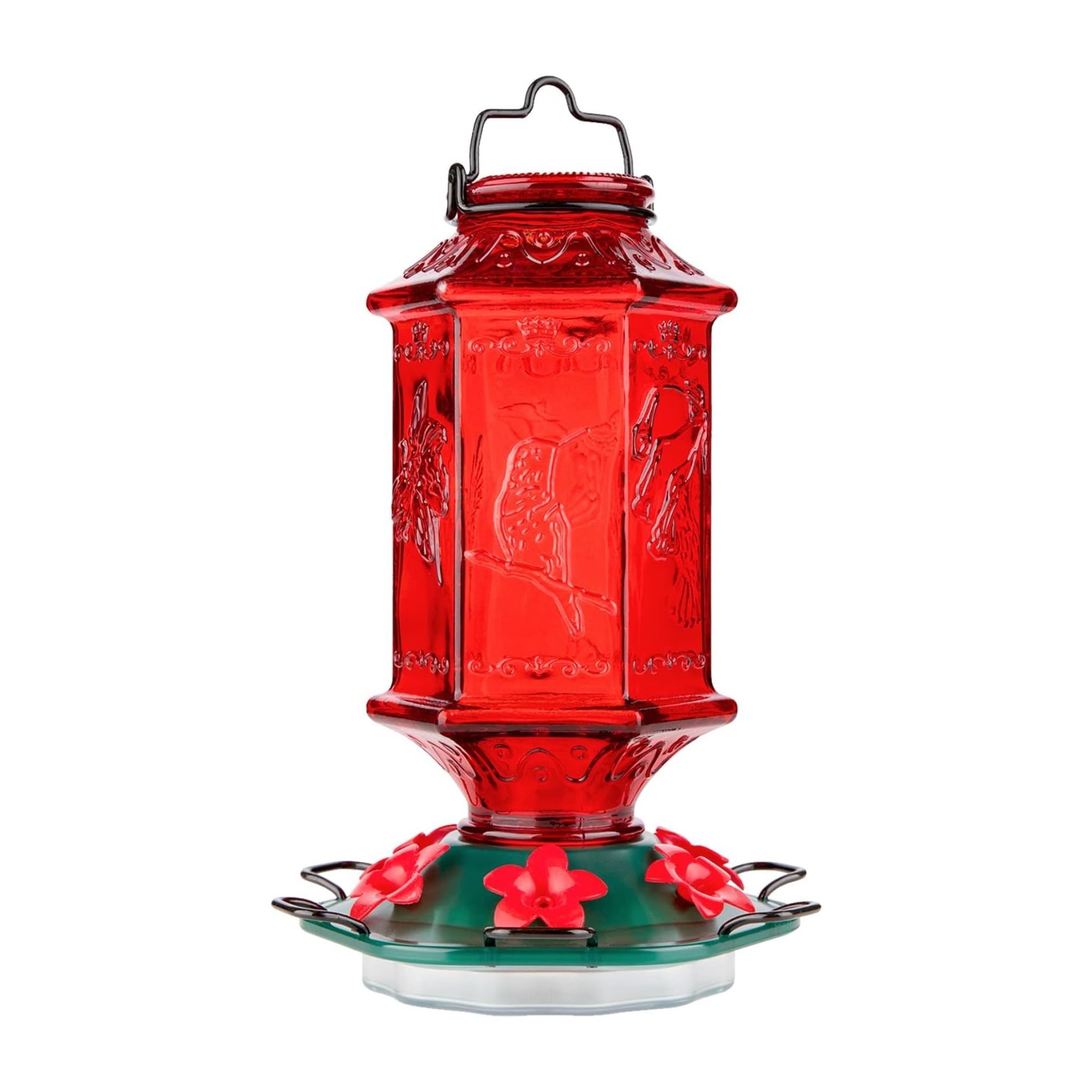
Price: $25.99
This glass, vintage-style hummingbird feeder really makes a statement in a small garden or on a balcony. It comes with six feeding ports and removable perches, so you can hang your feeder with or without them.
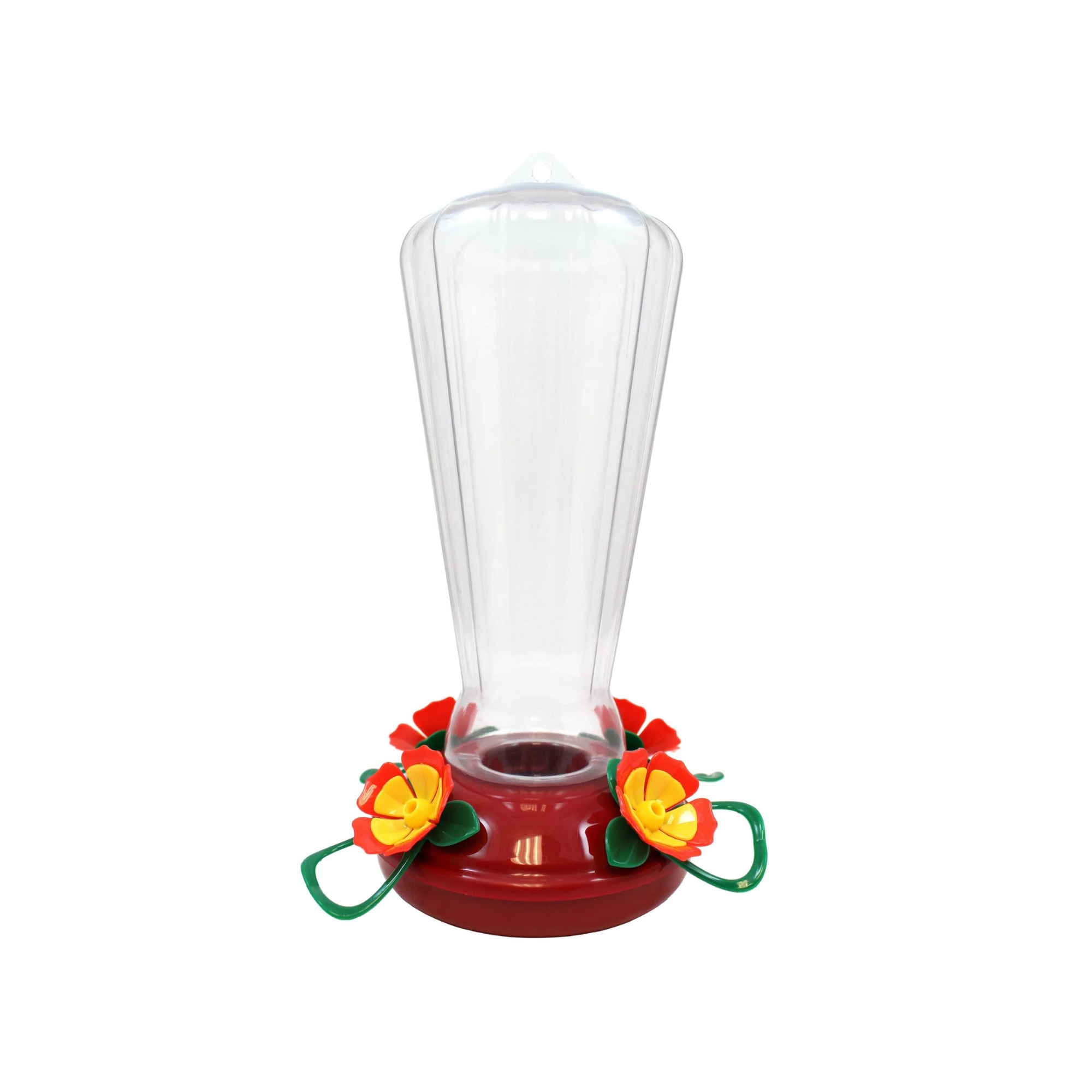
Price: $9.94
This budget-friendly buy features a leak-proof base and four built-in perches. It can hold 25 ounces of hummingbird food and the plastic design is rust-proof. The flower feeding ports deny access to bees and wasps.
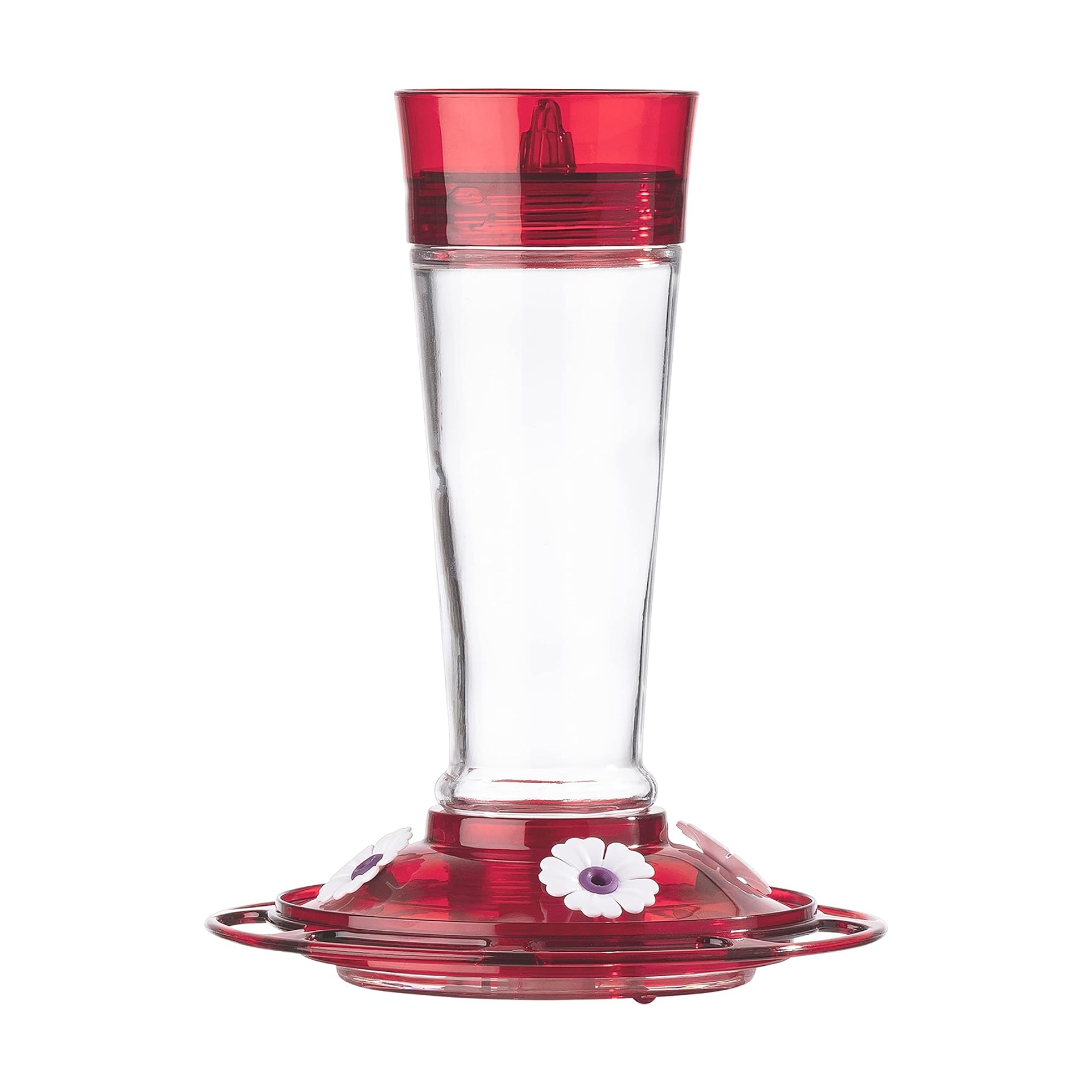
Price: $14.99
This simple hummingbird feeder holds 10 fluid ounces of hummingbird nectar and four flower-shaped feeding ports. Plus, the built-in ant moat prevents them from accessing the food. It's well-loved by customers with over 15,000 reviews.
Meet our expert

Cyrille Adjalala is a dedicated bird enthusiast whose passion began in childhood and evolved into a deep commitment to bird study. Recognizing a gap in online resources, Cyrille founded Bird Watchers Hub, a blog offering tips, facts, and stunning bird photography to foster a community of bird enthusiasts.
FAQs
Can I add honey?
No, you should not add honey to hummingbird food. Honey is not a suitable substitute for sugar as it can promote the growth of harmful bacteria and mold that can be fatal to hummingbirds. Stick to granulated white sugar and water.
Should I use red dye?
It's not necessary to use red dye in your hummingbird food. In fact, it can be harmful. Some commercial hummingbird foods contain red dye as the birds are attracted to the color, but we do not recommended this.
Hummingbirds are naturally attracted to the color red, so using a feeder with red parts is sufficient to attract them without the need for dye in the food.
How long does homemade hummingbird food keep?
Homemade hummingbird food can be stored in the refrigerator for up to two weeks. However, once it's in the feeder, it should be changed every three to five days, or more frequently in hot weather, to prevent fermentation and mold growth. Always clean the feeder thoroughly before refilling it.
Can I put my hummingbird feeder near a regular bird feeder?
It is generally not advisable to place a hummingbird feeder near a regular bird feeder. Larger birds can be aggressive and territorial, which might discourage hummingbirds from visiting. To ensure the safety and comfort of hummingbirds, place their feeder in a quiet, sheltered area away from other feeders.
What should I do if ants find my feeder?
Ants can be a common problem with hummingbird feeders. To deter ants from piling into your hummingbird feeder, you can use ant moats or traps, which are water-filled barriers that prevent ants from reaching the feeder.
These can be purchased or made at home. Also, ensure that the feeder is cleaned regularly to remove any sugar residue that might attract ants.
So there you have it — how to make hummingbird food in five simple steps. Making hummingbird nectar at home is easy, cost-effective, and ensures the food is safe and healthy for these tiny birds. Sit back and enjoy the delightful presence of hummingbirds and the vibrant energy they bring to your outdoor space.
Next, check out how to build a pond to attract wildlife.

I'm a senior writer with an English degree and NCJ qualification, plus years of experience writing news, lifestyle and consumer articles for the national and international press. I'm also a copywriter, working on a breadth of consumer and corporate projects, and a private education consultant. I live in the quiet of the countryside and love completing DIY tasks to breathe life into my small, newly-built home.